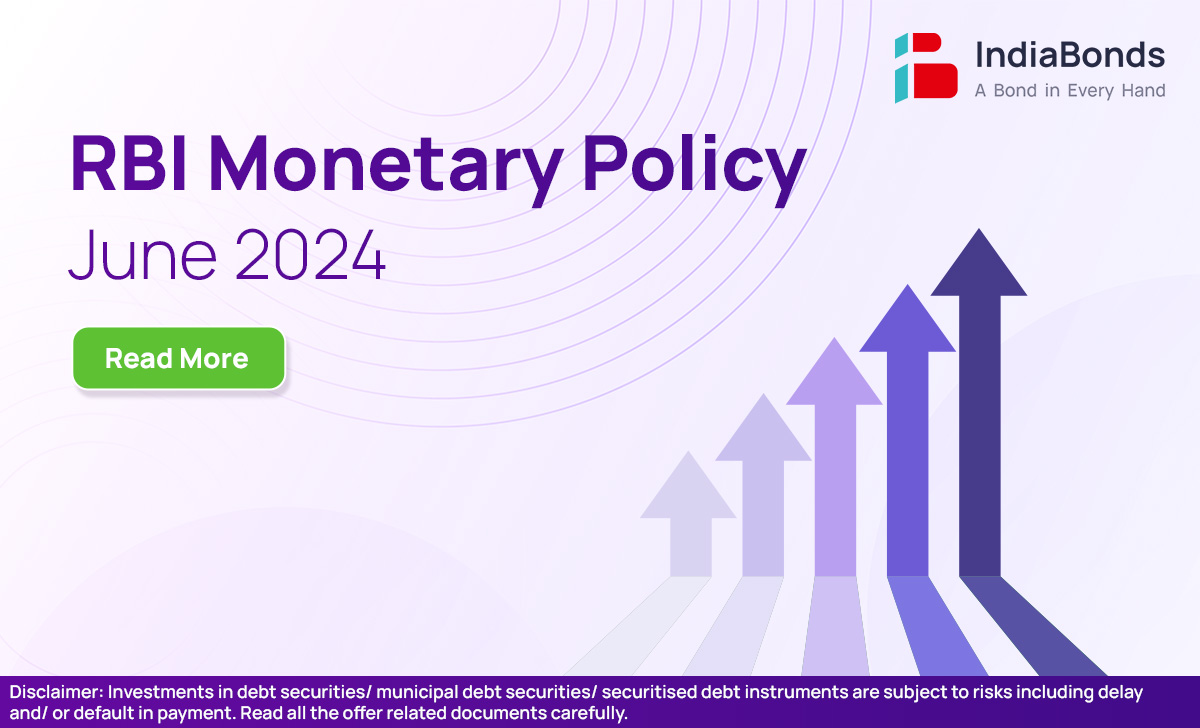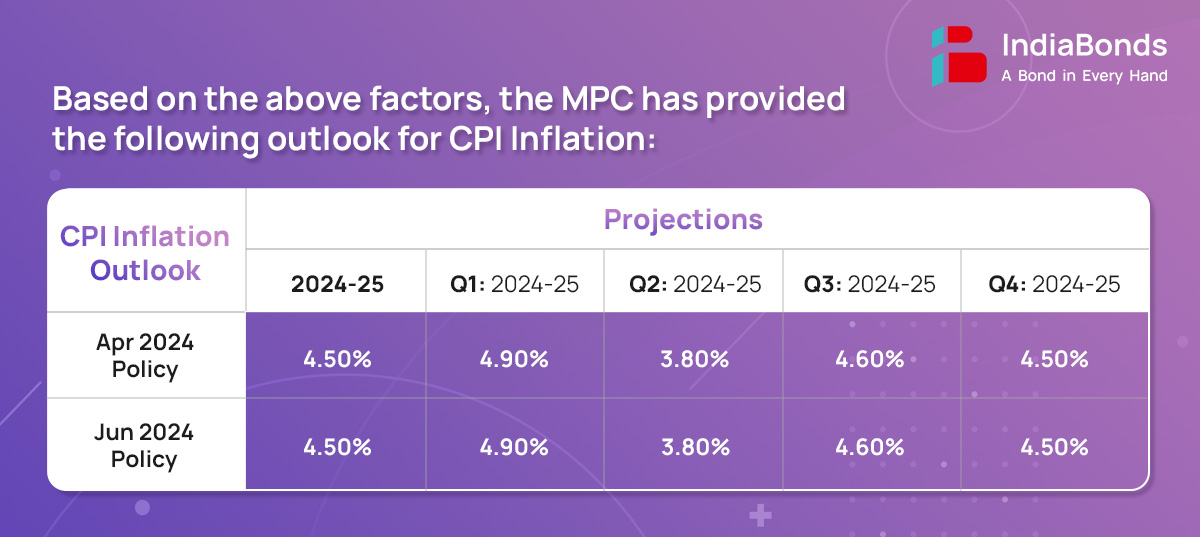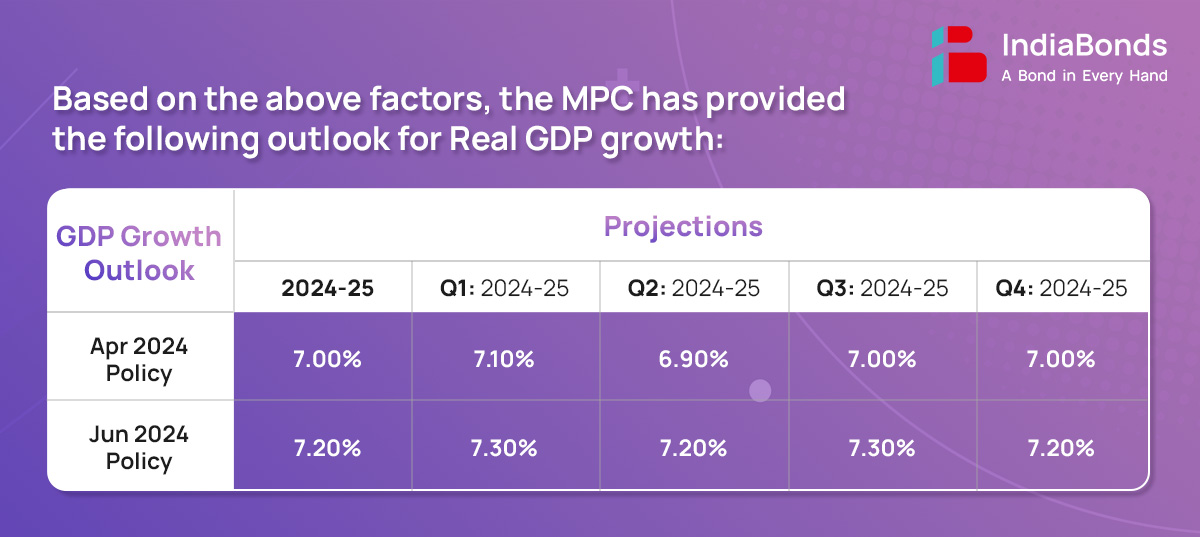
The RBI’s Monetary Policy Committee (MPC) conducted its monetary policy meeting from June 5-7, 2024.
On the basis of an assessment of the evolving macroeconomic situation, the Monetary Policy Committee (MPC) made the following announcements:
CPI headline inflation softened further during March-April, though persisting food inflation pressures offset the gains of disinflation in core and deflation in the fuel groups. Despite some moderation, pulses and vegetables inflation remained firmly in double digits. Vegetable prices are experiencing a summer uptick following a shallow winter season correction. The deflationary trend in fuel was driven primarily by the LPG price cuts in early March. Core inflation softened for the 11th consecutive month since June 2023. Services inflation moderated to a historic low and goods inflation remained contained.

The provisional estimates released by the National Statistical Office (NSO) placed India’s real GDP growth at 8.20% in FY23 – 24. During 2024-25 so far, domestic economic activity has maintained resilience. Manufacturing activity continues to gain ground on the back of strengthening domestic demand. The eight core industries posted healthy growth in April 2024. Manufacturing PMI in April-May 2024 has showed continued resilience. Services sector maintained buoyancy as evident from available high frequency indicators. PMI services stood strong at 60.2 in May 2024 indicating continued and robust expansion in activity.

Global economic activity is rebalancing and is expected to grow at a stable pace in 2024. Inflation has been moderating unevenly, with services inflation staying elevated and slowing progress towards targets. Uncertainty on the pace and timing of policy pivots by central banks is keeping financial markets volatile. Non-energy commodity prices have firmed up, while the US dollar and bond yields are exhibiting two-way movement with spillovers to emerging market currencies. Gold prices have surged to record highs on safe haven demand.
RBI has revised the definition of bulk deposits as ‘Single Rupee term deposit of Rs.3 crore and above’ for SCBs (excluding RRBs) and SFBs. Further, it is also proposed to define the bulk deposit limit for Local Area Banks as ‘Single Rupee term deposits of Rs.1 crore and above’, as applicable in case of RRBs.
RBI has decided to introduce a mobile application of the Retail Direct portal. The move is expected to further improve ease of access and the app will enable investors to buy and sell instruments on the go, at their convenience. The app will be available for use shortly.
The RBI has taken a number of measures over the years to deepen digital payments while ensuring their safety and security. Growing instances of digital payment frauds, however, highlight the need for a system-wide approach to prevent and mitigate such frauds. It is, therefore, proposed to establish a Digital Payments Intelligence Platform for network level intelligence and real-time data sharing across the digital payments’ ecosystem.
RBI has proposed to include payments, such as replenishment of balances in Fastag, National Common Mobility Card (NCMC), etc. which are recurring in nature but without any fixed periodicity, in the e-mandate framework.
The facility of cash deposit is presently available only through use of debit cards. Given the popularity and acceptance of UPI, as also the benefits seen from the availability of UPI for card-less cash withdrawal at ATMs, it is now proposed to facilitate cash deposit facility through use of UPI.
The RBI has taken several pioneering initiatives in recent years to encourage innovation in the Fintech sector. One such key initiative is the global hackathon: ‘HaRBInger – Innovation for Transformation’. The first two editions of the hackathon were completed in the year FY22-23, respectively. The 3rd of the global hackathon, with two themes, namely ‘Zero Financial Frauds’ and ‘Being Divyang Friendly’ will be launched shortly.
The next meeting of the MPC is scheduled during August 6 to 8, 2024
Disclaimer: Investments in debt securities/ municipal debt securities/ securitised debt instruments are subject to risks including delay and/ or default in payment. Read all the offer related documents carefully.